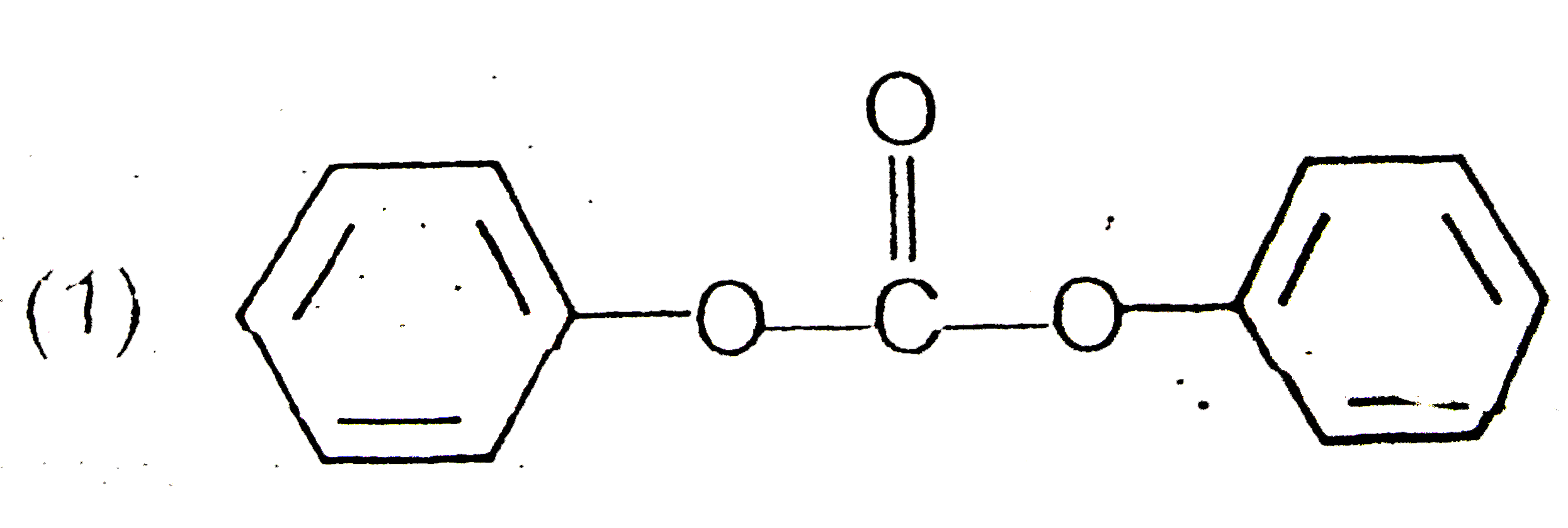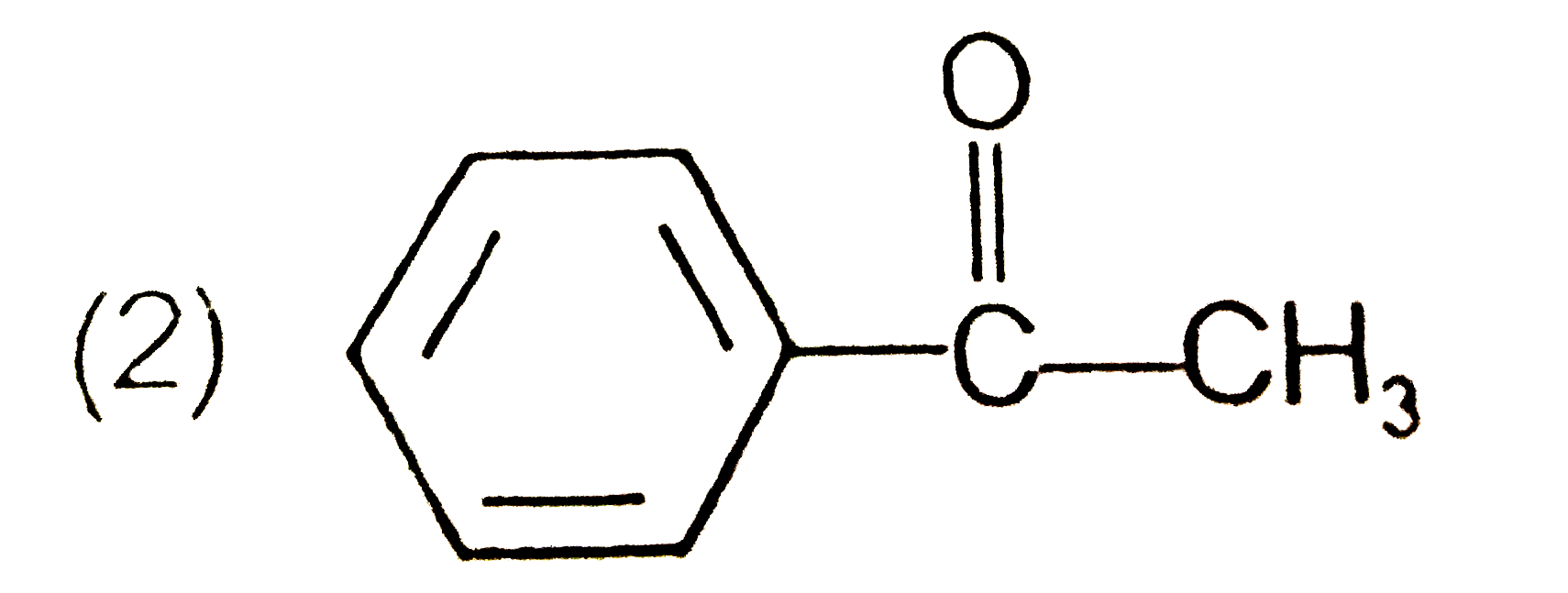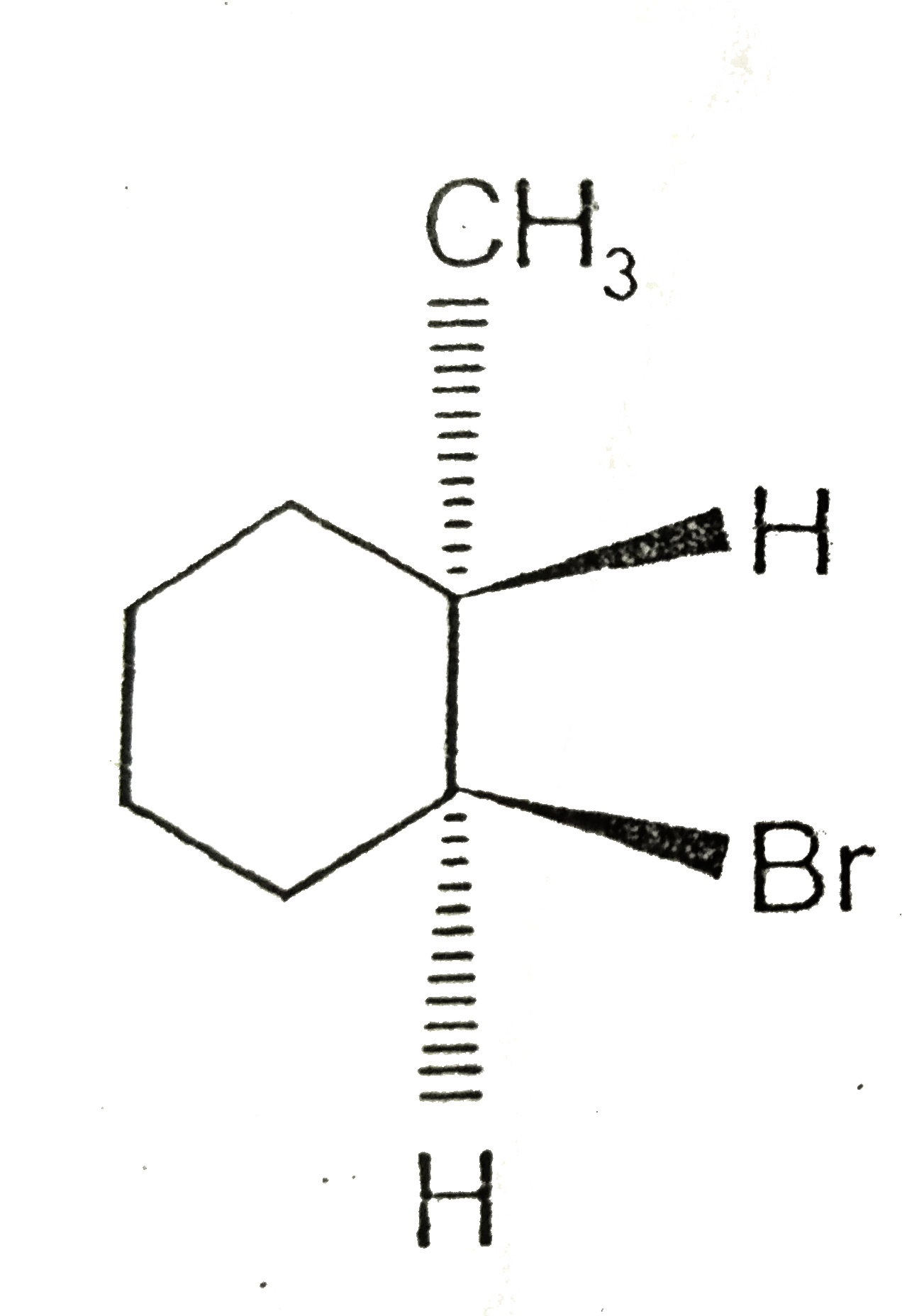Which of the following compounds will give tertiary butanol as the major product when treated with excess of MeMgBr?



The correct Answer is:A, C
To determine which of the given compounds will yield tertiary butanol as the major product when treated with excess methyl magnesium bromide (MeMgBr), we need to analyze the reactivity of each compound with the Grignard reagent.
1. Identify the Compounds:
We have several compounds to analyze. For this solution, let's denote them as Compound 1, Compound 2, Compound 3, and Compound 4.
2. Understanding Grignard Reagent Reaction:
The Grignard reagent (MeMgBr) is a strong nucleophile. It will attack electrophilic centers, particularly carbonyl groups (C=O). The reaction typically leads to the formation of an alcohol after hydrolysis.
3. Analyze Compound 1:
- Compound 1 is a benzaldehyde derivative (C6H5CHO).
- When treated with MeMgBr, the nucleophilic methyl group attacks the carbonyl carbon, forming an alkoxide intermediate.
- The alkoxide can then undergo protonation to yield a secondary alcohol (not tertiary butanol).
4. Analyze Compound 2:
- Compound 2 is an ester (C6H5COOCH3).
- The reaction with MeMgBr will lead to the formation of a tertiary alcohol after two successive nucleophilic attacks.
- The first attack forms a ketone, and the second attack leads to the formation of tertiary butanol.
5. Analyze Compound 3:
- Compound 3 is a ketone (C6H5C(=O)CH3).
- The reaction with MeMgBr will also lead to the formation of tertiary butanol after the nucleophilic attack and subsequent hydrolysis.
6. Analyze Compound 4:
- Compound 4 has an amine (C6H5C(=O)NH2).
- The nucleophilic attack by MeMgBr will not lead to the formation of tertiary butanol, as the amine is not a good leaving group.
7. Conclusion:
- From the analysis, Compound 2 and Compound 3 will yield tertiary butanol as the major product when treated with excess MeMgBr.
- Therefore, the correct options are Compound 2 and Compound 3.
Final Answer:
The compounds that will give tertiary butanol as the major product when treated with excess MeMgBr are Compound 2 and Compound 3.
We have several compounds to analyze. For this solution, let's denote them as Compound 1, Compound 2, Compound 3, and Compound 4.
The Grignard reagent (MeMgBr) is a strong nucleophile. It will attack electrophilic centers, particularly carbonyl groups (C=O). The reaction typically leads to the formation of an alcohol after hydrolysis.
- Compound 1 is a benzaldehyde derivative (C6H5CHO).
- When treated with MeMgBr, the nucleophilic methyl group attacks the carbonyl carbon, forming an alkoxide intermediate.
- The alkoxide can then undergo protonation to yield a secondary alcohol (not tertiary butanol).
- Compound 2 is an ester (C6H5COOCH3).
- The reaction with MeMgBr will lead to the formation of a tertiary alcohol after two successive nucleophilic attacks.
- The first attack forms a ketone, and the second attack leads to the formation of tertiary butanol.
- Compound 3 is a ketone (C6H5C(=O)CH3).
- The reaction with MeMgBr will also lead to the formation of tertiary butanol after the nucleophilic attack and subsequent hydrolysis.
- Compound 4 has an amine (C6H5C(=O)NH2).
- The nucleophilic attack by MeMgBr will not lead to the formation of tertiary butanol, as the amine is not a good leaving group.
- From the analysis, Compound 2 and Compound 3 will yield tertiary butanol as the major product when treated with excess MeMgBr.
- Therefore, the correct options are Compound 2 and Compound 3.
The compounds that will give tertiary butanol as the major product when treated with excess MeMgBr are Compound 2 and Compound 3.
Topper's Solved these Questions
- ALDEHYDES, KETONES AND CARBOXYLIC ACIDS BOOK - AAKASH INSTITUTE ENGLISHCHAPTER - ALDEHYDES, KETONES AND CARBOXYLIC ACIDS EXERCISE - Assignment (SECTION -D Linked Comprehension type Questions)
6 Videos
- ALDEHYDES, KETONES AND CARBOXYLIC ACIDS BOOK - AAKASH INSTITUTE ENGLISHCHAPTER - ALDEHYDES, KETONES AND CARBOXYLIC ACIDS EXERCISE - Assignment SECTION - E Assertion - Reason Type Questions)
7 Videos
- ALDEHYDES, KETONES AND CARBOXYLIC ACIDS BOOK - AAKASH INSTITUTE ENGLISHCHAPTER - ALDEHYDES, KETONES AND CARBOXYLIC ACIDS EXERCISE - Assignment (SECTION -B OBJECTIVE TYPES QUESTIONS (ONE OPTION IS CORRECT)
24 Videos
- ALCOHOLS, PHENOLS AND ETHERS BOOK - AAKASH INSTITUTE ENGLISHCHAPTER - ALCOHOLS, PHENOLS AND ETHERS EXERCISE - Try Yourself
5 Videos
- AMINES BOOK - AAKASH INSTITUTE ENGLISHCHAPTER - AMINES EXERCISE - Assignment Section -J (Aakash Challengers Questions)
9 Videos
Similar Questions
Knowledge Check
Which of the following reactions will give 2∘ chiral alcohol as major product?
A BCH3MgI(excess)+H−O∣∣C−O−CH2CH3H3⊕O−−→C
BCH3MgI(excess)+H−O∣∣C−O−CH2CH3H3⊕O−−→C DPhMgBr+CH3−O∣∣C−PhH3⊕O−−→
DPhMgBr+CH3−O∣∣C−PhH3⊕O−−→Which of the following reactions will give result as alkane as major product?
A B
B C
C D
D
Which of the following reaction will not give ether as a major product?
ACH3CH2Cl+Ag2(dry)→B(CH3)3CCl+CH3CH2O−Na+→C DCH3Cl+Na+O−−CH3∣C∣CH3−CH3→
DCH3Cl+Na+O−−CH3∣C∣CH3−CH3→
Which of the following alkenes will give anti-markownikoff's product as major product.
View SolutionWhich of the following give ether as a major product -
View SolutionIn which of the following Saytzeff product will not be formed as major product?

View SolutionExplain
 gives less substituted alkene as the major product when treated with alcoholic KOH
gives less substituted alkene as the major product when treated with alcoholic KOH
View SolutionWhich of te following reaction gives correct major product-
View Solution
